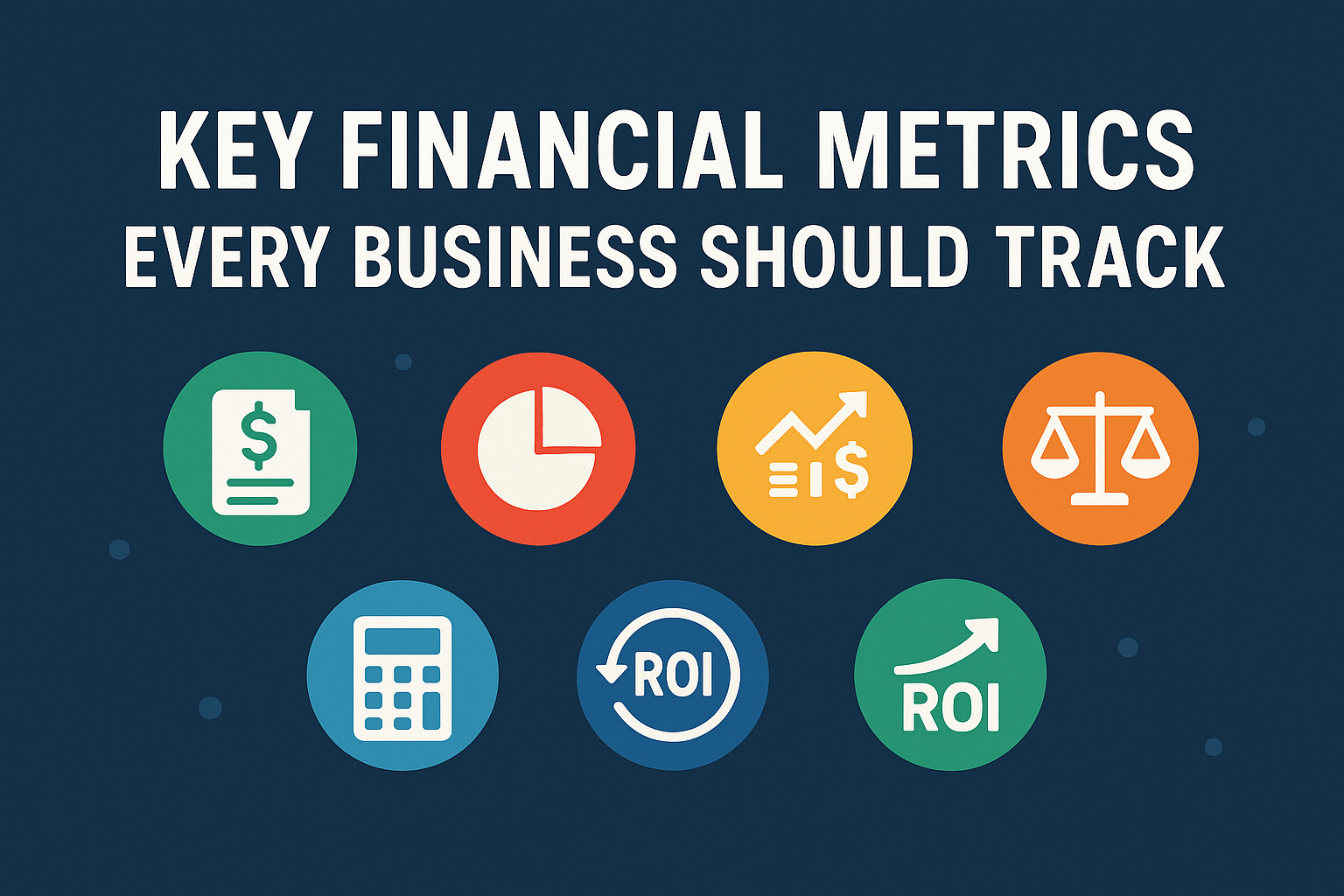Key Financial Metrics Every Business Should Track

Key Financial Metrics Every Business Should Track
Tracking and understanding key financial metrics is essential for running a successful business. These metrics give you insights into your company’s performance, profitability, and overall financial health. Below are some of the most important financial metrics every business owner should keep an eye on.
1. Cash Flow
Cash flow refers to the money moving in and out of your business. Positive cash flow means your business has enough cash to cover its expenses, invest in growth, and handle emergencies. Negative cash flow, on the other hand, signals that you may face financial difficulties.
Why it matters: Cash flow ensures you can meet day-to-day operational costs and avoid running into financial trouble.
2. Gross Profit Margin
Gross profit margin is the percentage of revenue that exceeds the cost of goods sold (COGS). It’s calculated by subtracting COGS from revenue and dividing by revenue. A higher margin indicates better profitability.
Why it matters: This metric helps you understand how efficiently your business is producing and selling its products.
3. Net Profit Margin
Net profit margin shows the percentage of revenue left after all expenses have been deducted, including operating costs, taxes, and interest. It’s calculated by dividing net profit by total revenue.
Why it matters: This provides an overall picture of your business's profitability and efficiency in managing costs.
4. Current Ratio
The current ratio compares a business’s current assets to its current liabilities. It’s calculated by dividing current assets by current liabilities.
Why it matters: It shows your ability to meet short-term obligations. A ratio of 1.5 or higher is generally considered healthy.
5. Accounts Receivable Turnover
This metric measures how often your business collects its outstanding receivables within a certain period. It’s calculated by dividing net credit sales by average accounts receivable.
Why it matters: A higher turnover ratio means your business is efficiently collecting payments, which helps maintain cash flow.
6. Return on Investment (ROI)
ROI is the ratio of net profit to the cost of investment. It measures the return generated on investments made by the business.
Why it matters: It helps assess the profitability of any investments or projects and ensures you’re getting a good return.
7. Debt-to-Equity Ratio
This ratio compares your business’s total liabilities to its shareholder equity. It’s calculated by dividing total liabilities by shareholder equity.
Why it matters: It helps assess the financial risk of your business. A higher ratio indicates more debt reliance, which can be risky.
Conclusion
By tracking these financial metrics, business owners can make informed decisions, identify areas for improvement, and ultimately ensure the financial stability and growth of their business. Regularly reviewing these key metrics can help you stay on top of your financial health and plan for future success.
Let's work together
More Blogs
Blog Title
Lorem ipsum dolor sit amet, consectetur adipiscing elit.

Blog Title
Lorem ipsum dolor sit amet, consectetur adipiscing elit.

Blog Title
Lorem ipsum dolor sit amet, consectetur adipiscing elit.


Effective Pricing Strategies for Business: How to Find the Right Approach for Your Product
Pricing isn’t just about numbers—it’s about perception, positioning, and profit. From cost-plus simplicity to value-based sophistication, businesses can choose strategies like penetration for fast growth, skimming for early profit, psychological tricks to influence buying, or competitive pricing to stay in the game. The key? Pick the right approach for your market, keep testing, and adjust as your customers and competitors evolve. Nail your pricing strategy, and you don’t just sell—you scale.

Compliance & Regulation (the fun stuff)
Starting a business in NZ can be pretty easy, however there are several areas to consider when starting out to make sure you are compliant!

Common Things That Can Drain a Business Cash Flow
Cash flow is the lifeblood of your business—but it’s amazing how quickly it can slip away. From late-paying customers to overstocked shelves, rising overheads, and seasonal slumps, there are hidden drains that can quietly choke your cash reserves. In this article, we break down the most common culprits and how to tackle them before they sink your business.

